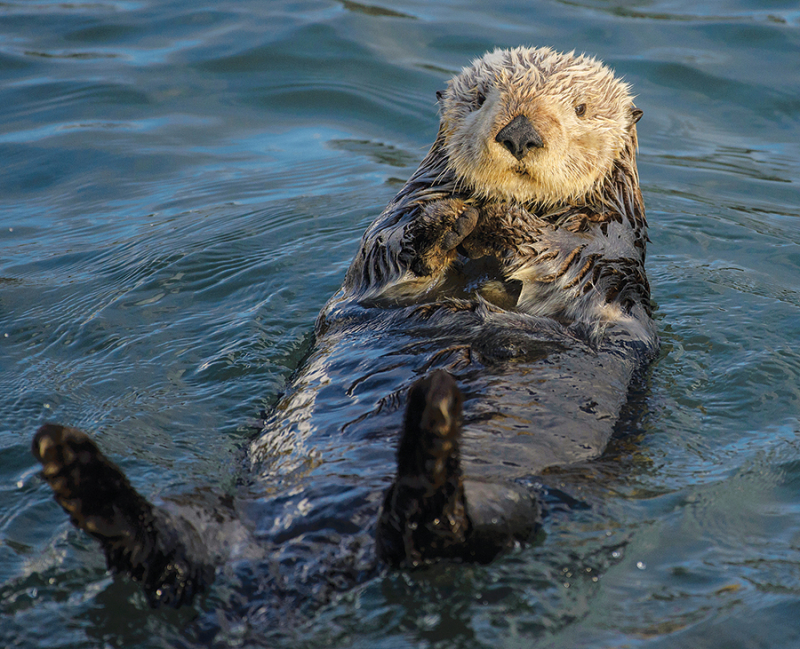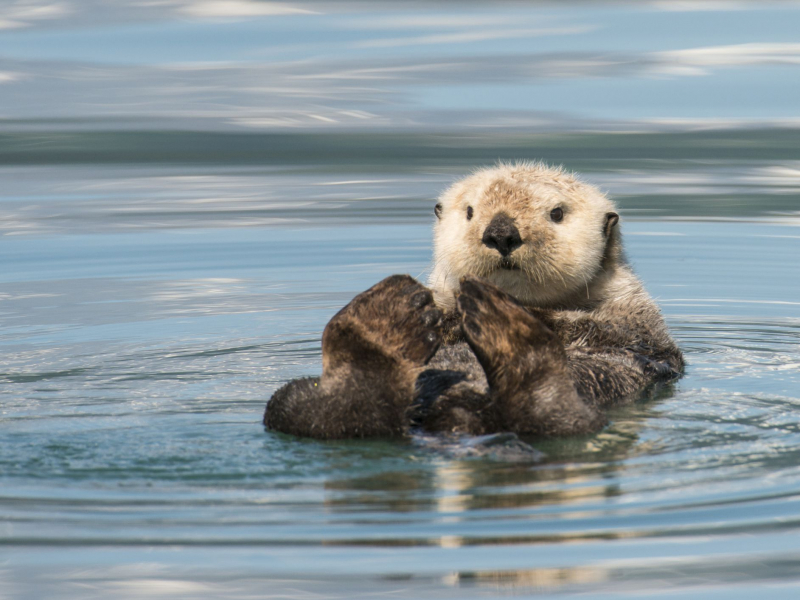Sea otters
The northern and eastern shores of the North Pacific Ocean are home to these marine animals. Sea otters are the largest members of the weasel family; at maturity, they typically weigh between 14 and 45 kg, can walk on land, and only exist in the waters. Their incredibly thick fur serves as their primary form of insulation. These species were formerly thought to number between 150,000 and 300,000, but between 1741 and 1911, they were intensively killed for their fur, and their numbers decreased to between 1,000 and 2,000.
The sea otters live in areas close to the coast, where it forages by diving to the ocean floor. It mostly preys on fish species as well as numerous mollusks, crustaceans, and marine invertebrates like sea urchins. Its feeding and foraging behaviors are notable in a number of ways. It is one of the few mammal species that uses tools because it cracks open shells and uses pebbles to dislodge prey. It is a keystone species over the majority of its range, regulating sea urchin populations that would otherwise cause serious harm to kelp forest ecosystems. They break apart and even displace the shells of their prey using rocks as tools. They are keystone species because they control the sea urchin population, which would have caused serious harm to the kelp forest ecosystems.












